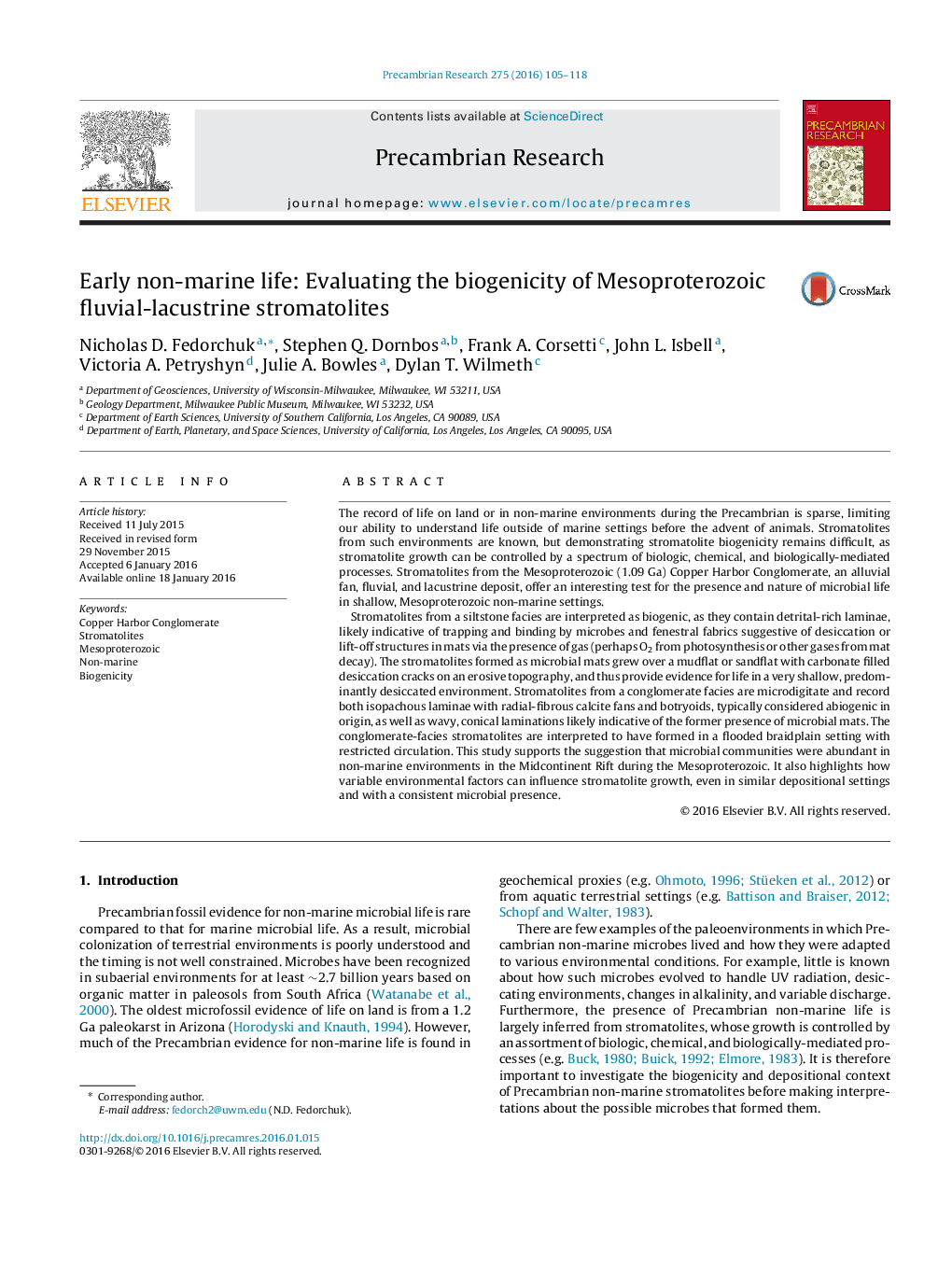| کد مقاله | کد نشریه | سال انتشار | مقاله انگلیسی | نسخه تمام متن |
|---|---|---|---|---|
| 4722366 | 1639600 | 2016 | 14 صفحه PDF | دانلود رایگان |

• Copper Harbor Conglomerate contains biogenic and abiogenic stromatolites.
• Non-marine stromatolites formed in shallow desiccating environment.
• Precambrian stromatolites show interaction between microbes and their environments.
• Copper Harbor stromatolites provide insight into early non-marine life.
The record of life on land or in non-marine environments during the Precambrian is sparse, limiting our ability to understand life outside of marine settings before the advent of animals. Stromatolites from such environments are known, but demonstrating stromatolite biogenicity remains difficult, as stromatolite growth can be controlled by a spectrum of biologic, chemical, and biologically-mediated processes. Stromatolites from the Mesoproterozoic (1.09 Ga) Copper Harbor Conglomerate, an alluvial fan, fluvial, and lacustrine deposit, offer an interesting test for the presence and nature of microbial life in shallow, Mesoproterozoic non-marine settings.Stromatolites from a siltstone facies are interpreted as biogenic, as they contain detrital-rich laminae, likely indicative of trapping and binding by microbes and fenestral fabrics suggestive of desiccation or lift-off structures in mats via the presence of gas (perhaps O2 from photosynthesis or other gases from mat decay). The stromatolites formed as microbial mats grew over a mudflat or sandflat with carbonate filled desiccation cracks on an erosive topography, and thus provide evidence for life in a very shallow, predominantly desiccated environment. Stromatolites from a conglomerate facies are microdigitate and record both isopachous laminae with radial-fibrous calcite fans and botryoids, typically considered abiogenic in origin, as well as wavy, conical laminations likely indicative of the former presence of microbial mats. The conglomerate-facies stromatolites are interpreted to have formed in a flooded braidplain setting with restricted circulation. This study supports the suggestion that microbial communities were abundant in non-marine environments in the Midcontinent Rift during the Mesoproterozoic. It also highlights how variable environmental factors can influence stromatolite growth, even in similar depositional settings and with a consistent microbial presence.
Journal: Precambrian Research - Volume 275, April 2016, Pages 105–118